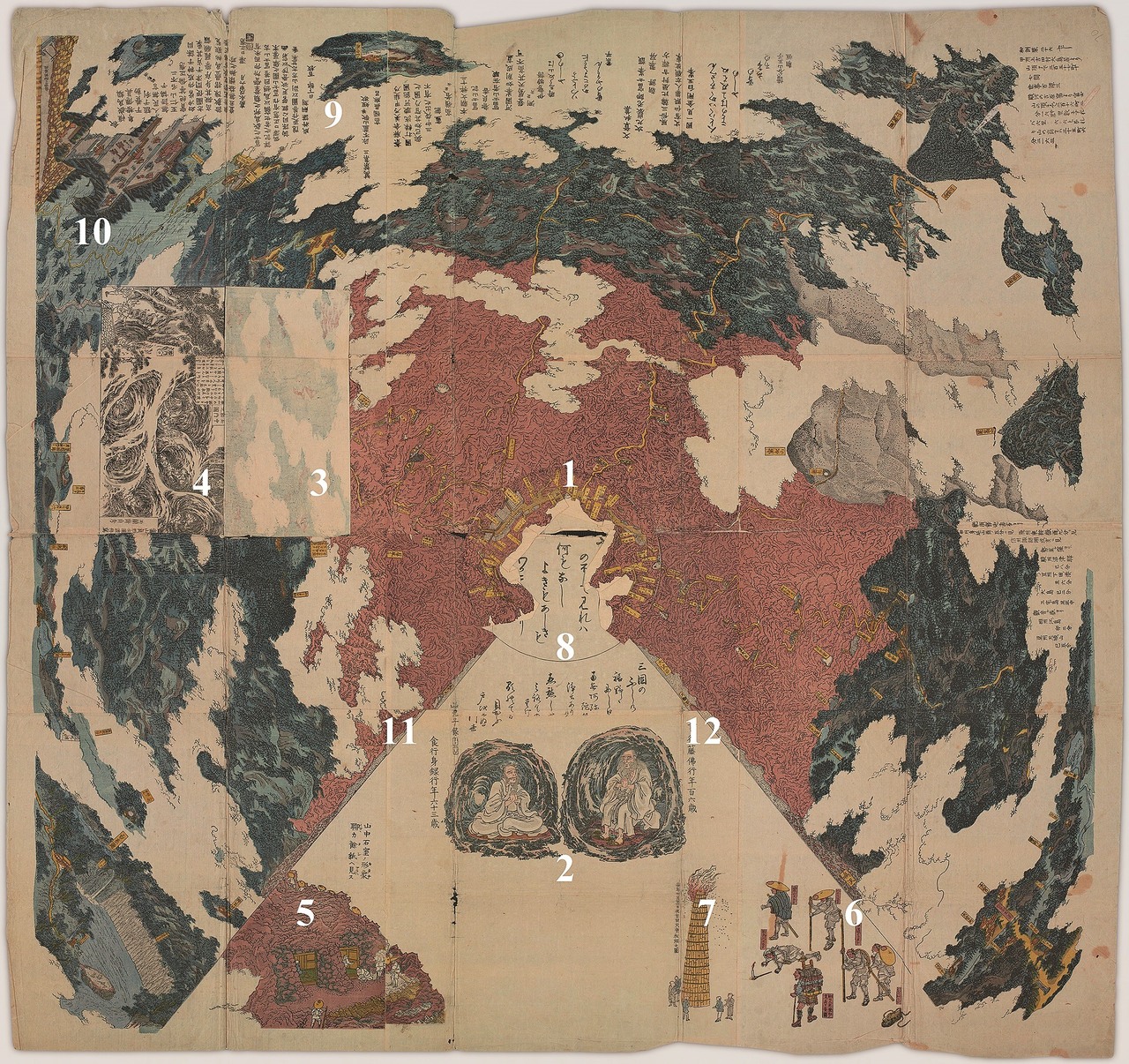A Religious Cult Believed They Could Be Reborn Inside Mount Fuji's 'Womb Caves'
A 19th-century map describes a hidden network of lava caves.

The 1848 woodblock print “Portrayal of Mount Fuji” (Fujisan no zu) by Utagawa Sadahide, featured in Cartographic Japan: A History in Maps published by the University of Chicago Press. UNIVERSITY OF BRITISH COLUMBIA LIBRARY, GEORGE H. BEANS COLLECTION
By Lauren Young OCTOBER 10, 2016
Around 1848, Japan's tallest peak, Mount Fuji, was depicted in a multicolor panoramic woodblock map. Amid the intricately illustrated trails, vegetation, and turf, this print featured an unusual paper flap. When flipped over, painter Utagawa Sadahide reveals the network of lava caves hidden deep inside the core of the active 12,388-foot volcano.
For centuries, religious devotees, or ascetics, looked towards Mount Fuji as a place of worship, trekking up the mountainside to reap its spiritual powers. The mysterious lava caves (labeled 3 on the map above) were thought of as “human wombs,” and those who journeyed through the dark passageways could experience rebirth.
“Mountain ascetics in Japan, including those devoted to Mount Fuji, experience ritual death and rebirth in their rites in the mountain,” says Fumiko Miyazaki, who analyzed the unique map of Mount Fuji in the book Cartographic Japan: A History in Maps. By practicing and passing through the caves, “an ascetic imagined that he or she gives up his or her old self stained with sin to reappear as a better person in the world.”

Mount Fuji, one of the Three Holy Mountains in Japan. (Photo: skyseeker/CC BY 2.0)
There are hundreds of caves on the flanks of Mount Fuji. Many of the caves formed as the mountain continued to shift and change over years of volcanic eruptions and activity. When lava flowing down from the crater reached the forest on the lower regions of the mountain, it coated trunks of large trees which collapsed and were coated with lava. As the trees cooled, they rotted away and left behind caves. Many caves on the northern side of the mountain, including the caves close to the Yoshida entrance Sadahide drew in the map, are said to be a byproduct of a large-scale eruption in 937, explains Miyazaki.

Pilgrims collected "milk" from the stalactite "breasts." (Photo: Public Domain)
http://www.atlasobscura.com/articles/a-religious-cult-believed-they-could-be-reborn-inside-mount-fujis-womb-caves


